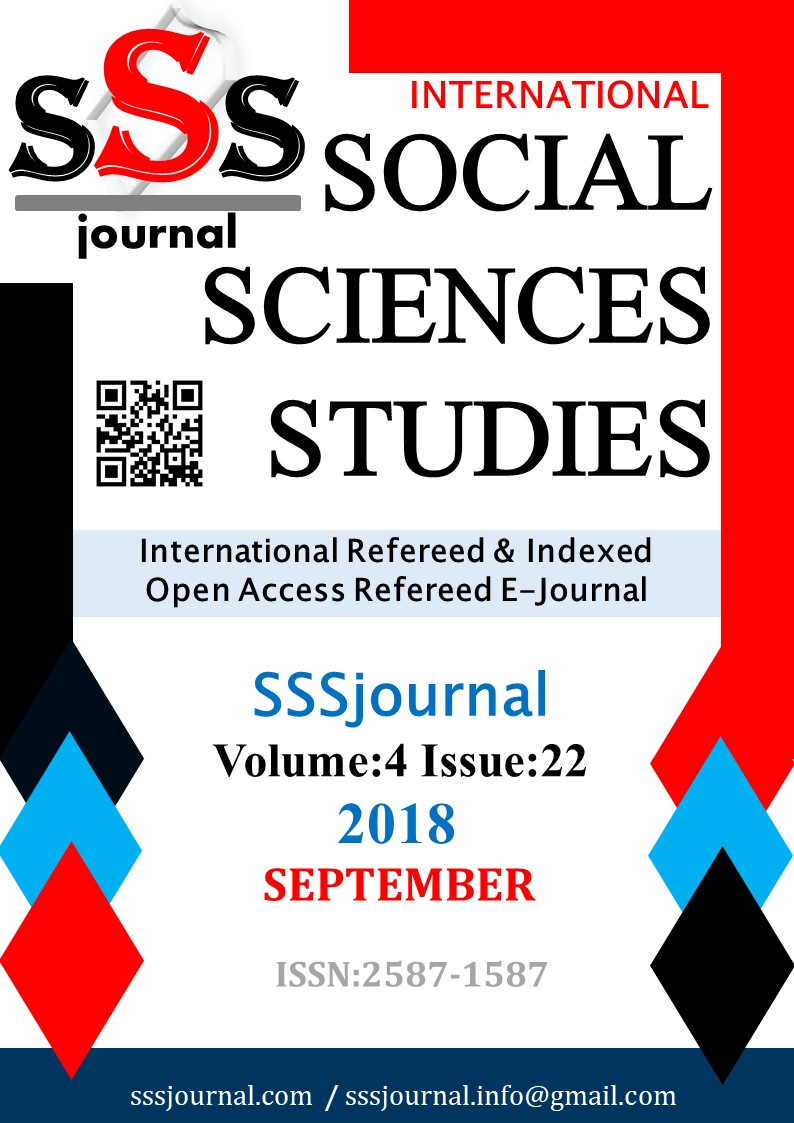AİLE HEKİMLİĞİ UYGULAMASI VE BİRİNCİ BASAMAK SAĞLIK HİZMETLERİNİN KULLANIMININ HALK SAĞLIĞI AÇISINDAN ÖNEMİ
Author :
Abstract
Toplumsal hayatta refah düzeyine erişilebilmesinin, toplumu oluşturan bireylerin genel sağlık durumlarındaki sürekli iyileştirmeler ile olan yakın ilişkisi bilinen bir husustur. Daha sağlıklı bir toplum için; sağlıkta eşitlik sağlanması, hayata anlam ve sağlık kazandırılması ve hayatın uzatılması amaçlanmaktadır. Bu hedeflerin sağlanabilmesi özellikle bireylerin sağlıklılık durumlarının sürdürülmesiyle mümkündür ve birinci basamak adı altında toplanan sağlık hizmetleri ile sağlanabilmektedir. Ülkemiz sağlık sistemi sağlık hizmetlerinin sunumunda basamak sistemini esas almış olup; örgütlenme birinci, ikinci ve üçüncü basamaklar şeklindedir. Basamaklandırılmış bir sağlık sistemi içinde birinci basamak sağlık kuruluşlarının temel işlevi, herkes için koruyucu sağlık hizmeti sunmak olmalıdır. Birincil korumada, bireyin hastalıklara yakalanması önlenmeye çalışılmaktadır. İkincil koruma hizmetleri ise, birincil koruma hizmetlerinin etkisiz kalması durumunda uygulanmaktadır. Ancak, birinci basamakta çözümlenebilecek birçok sorun ikinci basamağa, ikinci basamakta çözümlenebilecek sorunlar da üçüncü basamak sağlık kurumlarına aktarılmaktadır. Bu durum, kurumlarda gereksiz yığılmalara yol açmakta, çalışanların verimliliğini etkilemekte ve hizmet kalitesi ile hasta memnuniyetini azaltmaktadır. Bu durumun oluşmasının önlenmesi için yürütülen basamak sistemi ne yazık ki yeteri kadar amacına hizmet etmemektedir. Halk sağlığında birinci basamak sağlık hizmetlerinin etkin kullanımı önemli bir yer tutuğu bilinse de, yapılan çalışmalar aile hekimi çekirdek yeterliliklerinin hastaların beklentileriyle uyuşmadığını vurgulamaktadır. Birinci basamak tarafından uygulan ve ücretsiz olan taramalara katılımın sağlanması ve takibinin yapılması da önem taşımaktadır. Aile hekimliği kapsamında yürütülen hizmetlerin içine birinci basamakta yönetilebilecek kronik hastalıklarında alınması hem toplum sağlığı açısından hem de maliyet açısından gerekli önemli görülmektedir. Aile hekimliğinin ve özellikle birinci basamak hizmetlerinin daha aktif kullanımı hem sağlık hizmetinin kalitesini artıracak hem de sağlıklı ve refah düzeyi yüksek bir toplumun oluşmasına temel oluşturacaktır. Bu konuda aile hekimlerinin ve halk sağlığı hemşirelerinin görev ve sorumlulukları yanında politika yapıcılarının da sorumluğu önem taşımaktadır.
Keywords
Abstract
It is a well-known fact that the level of prosperity in social life is closely linked to the continuous improvements in the general health status of the individuals constituting the society. For a healthier society; to provide equality in health, to gain sense of meaning and health and to extend life. The achievement of these goals is possible, in particular, by maintaining the health status of the individual and can be achieved through health services collected under the name of primary care. Our country's health system is based on the step system in the presentation of health services; organization is the first, second and third steps. The primary function of primary health care facilities in a stepped-up health care system should be to provide preventive health care for all. In primary protection, the individual is trying to prevent the disease from getting caught. Secondary protection services are implemented when primary protection services are ineffective. However, many problems that can be solved in the first step are transferred to the second step, and problems that can be solved in the second step are transferred to tertiary care institutions. This leads to unnecessary clutter in institutions, affects the productivity of employees and reduces the quality of service and patient satisfaction. Unfortunately, the system of steps performed to prevent this situation from happening does not serve as much as its purpose. Although effective use of primary health care is important in public health, studies have emphasized that family physician core competencies do not match patients' expectations. It is also important to ensure participation and follow-up of the screening, which is carried out by the primary level and is free of charge. Taking into the services carried out within the scope of family medicine in the chronic diseases that can be managed in the first step seems important both in terms of community health and cost. The more active use of family medicine and especially primary care services will be the basis for the formation of a healthy and prosperous society as well as improving the quality of health care services. In this regard, it is important that the responsibility of policy makers as well as the duties and responsibilities of family physicians and public health nurses is important.
Keywords
- Aydın B. (2004). Sağlıkta değişim, SB Diyalog Dergisi, 7:4-6
- Aydın B. (2004). Sağlıkta değişim, SB Diyalog Dergisi, 7:4-6
- Boerma, W. (2003). Profiles of General Practice in Europe. An international study of variation in the tasks of general practitioners. Utrecht Netherlands: NIVEL.
- De Maesneer J, Roberts RG, Demarzo M., et al. (2012). Tackling NCDs: a different approach needed. The Lancet, 379:1860-1.
- Delnoij D, Van MG, Paulus A, Groenewegen P. (2000). Does general practitioner gatekeeping cut health care expenditure? J Health Serv Res Policy, 5(1):22-6.
- ICN. (2008). Nursing perspectives and contribution to primary health care. Geneva, Switzerlan.
- Macinko, J., Starfield B., Shi L. (2003). The contribution of primary care systems to health outcomes withinOrganization for Economic Cooperation and Development (OECD) Countries, 1970-1998. Health Services Research 38(3):831-65.
- Starfield B. (1994). Is primary care essential? Lancet, 344(8930):1129-33.
- Starfield, B. (2003). Primary care, equity and health in an international context. A work-in-progress seminaron health and healthcare in changing environments: the Malaysian experience. Erişim Tarihi: 12.01.2017, http://www.pcdom.org.my/phc
- Tatar M. (1996). Community participation in health care: The Turkish case. Soc Sci Med, 42:1493-500.Türkiye’de Aile Hekimliği. http://ailehekimligi.gov.tr/aile-hekimlii/tuerkiyedeki-aile-hekimlii.html.
- WHO. (2008). The world health report 2008: primary health care now more than ever. Geneva, WHO. ISBN 978 92 4 156373 http://www.who.int/whr/2008/en/index.html





